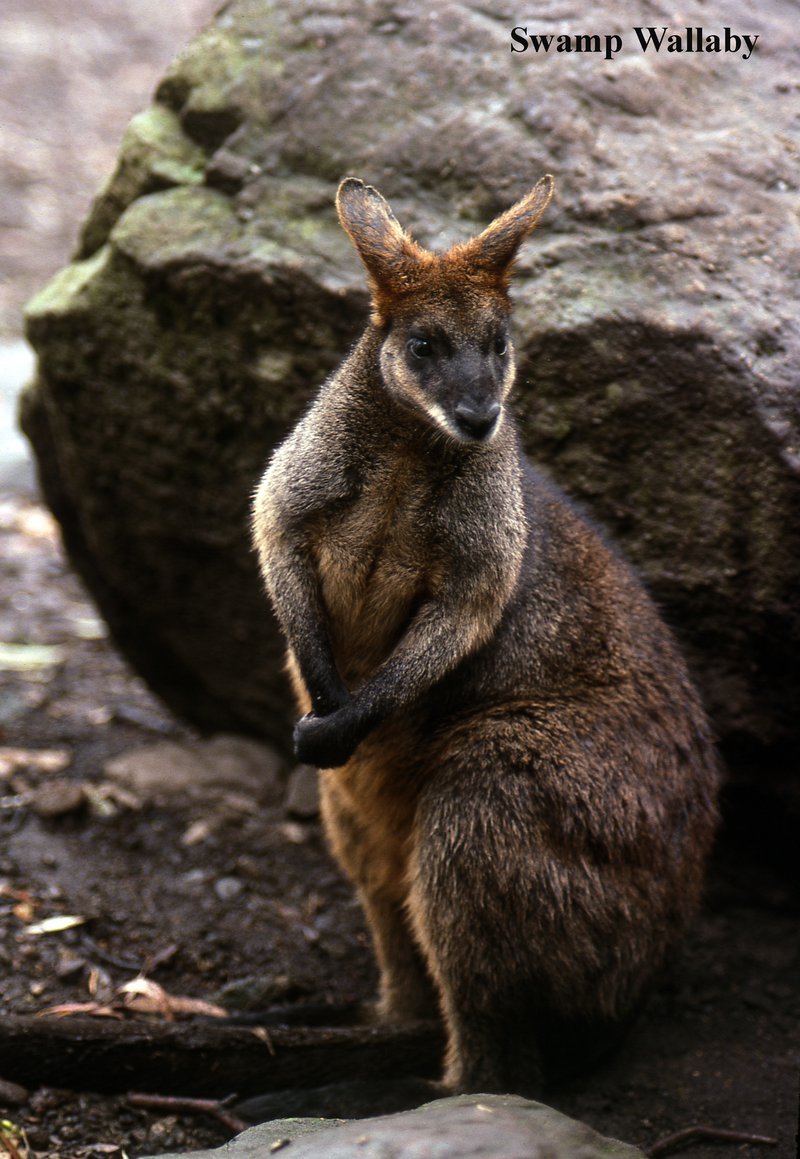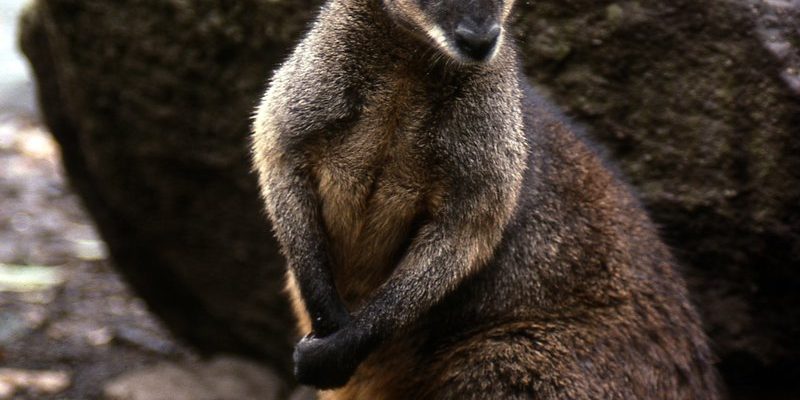
The swamp wallaby is not just another animal; it represents a piece of Australia’s rich history. Its evolution spans millions of years, shaped by environmental changes and adaptations that reflect the challenges of survival. So, grab a cup of coffee, and let’s hop into the captivating world of the swamp wallaby’s past.
What is a Swamp Wallaby?
So, what exactly is a swamp wallaby? These critters belong to the family Macropodidae, which means “big foot” in Greek—a fitting name given their powerful hind legs. They are smaller than your average kangaroo, standing about 3 feet tall and weighing around 20-35 pounds. With their dark brown fur, lighter underbellies, and a distinctive long tail, they’re pretty adorable.
Swamp wallabies are unique in their preference for wet, marshy areas, hence the name. They’re primarily found in eastern Australia and are known for their agility in navigating thick vegetation. You might spot them munching on grass, leaves, and even young shoots. The way they hop and bound through their environment is a sight to behold, showcasing their evolution for life in dense habitats.
The Ancestors of the Swamp Wallaby
To understand the swamp wallaby’s evolution, we must go back in time—way back. The ancestors of modern wallabies started emerging around 25 million years ago during the Miocene epoch. This was a time when Australia’s environment was significantly different, with lush forests and a variety of plant life.
These early marsupials adapted to changing habitats, gradually developing distinct features that helped them thrive. Fossil evidence shows that ancient relatives of the swamp wallaby looked quite different from what we see today. Over millions of years, as climates shifted and habitats evolved, these creatures evolved, too, adapting to survive in various landscapes, including wetlands.
Key Adaptations
Some notable adaptations of the swamp wallaby include:
- Dietary Flexibility: They can eat a wide range of vegetation, which helps them thrive where food sources might vary.
- Physical Size: Being smaller than other wallabies allows them to maneuver through dense underbrush more effectively.
- Strong Legs: Their powerful hind legs enable quick escapes from predators, making them agile survivors.
These traits play a significant role in their evolution, helping them explore and adapt to their surroundings over the ages.
Environmental Changes and Adaptation
As time passed, changes in the environment continued to shape the swamp wallaby’s evolution. During the Pleistocene epoch, Australia experienced cycling glacial periods, which transformed the landscape. Wetlands, forests, and grasslands came and went, and the swamp wallaby had to adapt accordingly.
It’s like a game of musical chairs—when the environment changes, the animals have to find a new place to sit. Swamp wallabies moved into wetter habitats as these areas became more available, and they adapted to munch on fresh, nutrient-rich plants. This adaptability is a key aspect of their evolutionary history.
The Role of Climate
Climate is a significant player in shaping evolution. Every cycle of wet and dry conditions influenced the dietary preferences and mobility of swamp wallabies:
- Wet Periods: Increased vegetation allowed them to thrive in rich environments.
- Dry Periods: Swamp wallabies adapted by becoming more mobile, seeking out areas with more reliable food sources.
Their survival through these changes is a testament to their resilience.
Swamp Wallabies and Their Ecosystem
The swamp wallaby plays a vital role in its ecosystem. As herbivores, they help manage the vegetation in their habitats. By grazing on young plants and grasses, they promote the growth and health of their surroundings. It’s a beautiful cycle: they eat plants, and in doing so, they allow for the flourishing of new growth.
Additionally, they serve as prey for larger predators—like dingoes and eagles—contributing to the food chain. This balance keeps the ecosystem in check and ensures biodiversity thrives.
The Importance of Biodiversity
Biodiversity is essential for a healthy ecosystem. Each species, including the swamp wallaby, plays a unique role. Here’s why this matters:
- Ecological Balance: A diverse range of species ensures stability and resilience in the environment.
- Habitat Health: Each species contributes to the overall health of its habitat.
- Adaptation and Survival: Diversity allows ecosystems to adapt to environmental changes more effectively.
Without swamp wallabies and similar creatures, ecosystems would struggle to maintain balance.
Threats and Conservation Efforts
Despite their adaptability, swamp wallabies face threats today. Habitat destruction, primarily due to urban development and agriculture, has significantly impacted their populations. Roads, pollution, and climate change also pose risks to their survival.
Conservation efforts are crucial to protecting these unique animals. Organizations work to preserve wetlands and restore habitats, ensuring swamp wallabies have safe spaces to thrive. Public education about the importance of biodiversity and the role of these marsupials helps promote awareness and action.
How You Can Help
You might be wondering how you can contribute to conservation efforts. Here are a few ideas:
- Support Conservation Organizations: Donating to or volunteering with wildlife conservation groups can make a difference.
- Educate Others: Share information about swamp wallabies and their habitats.
- Practice Responsible Tourism: When visiting natural areas, follow guidelines to minimize your impact on wildlife.
Every little action contributes to safeguarding these incredible creatures and their habitats.
The swamp wallaby is more than just another cute marsupial hopping across the wetlands of Australia. Its evolutionary history tells a story of adaptation, survival, and resilience through changing landscapes. From its ancient ancestors to its crucial role in the ecosystem today, the swamp wallaby exemplifies the intricate connections that exist within nature.
As we marvel at these charming creatures, let’s remember the importance of protecting their habitats. By understanding their evolution and the challenges they face, we can all play a part in ensuring that swamp wallabies continue to thrive for generations to come. So next time you think about Australia’s wildlife, don’t forget to give a nod to the remarkable swamp wallaby and its incredible journey through time.

